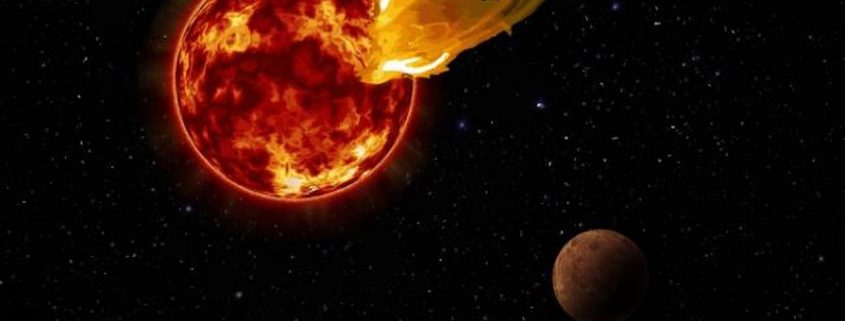I-LOFAR used as part of the International LOFAR Telescope for the first time to Observe Flaring Star
The Irish LOFAR telescope at Birr reached a major milestone on March 6, 2018, when is was used for the first time to observe a nearby flare star called “CN Leo” as part of an International LOFAR Telescope (ILT) observing campaign.
The international team, which includes Irish astronomers Stephen Bourke and Aaron Golden, aim to “catch” a stellar flare exploding in the star’s atmosphere, and to use the I-LOFAR and ILT to understand how such flares evolve and how they compare to solar flares.
CN Leo is a small, red dwarf star about 7.9 light years away in the constellation Leo, and is likely to possess a planetary system. In fact, we now know that the vast majority of stars in the galaxy that have planetary systems that could harbour habitable planets orbit red dwarf stars like CN Leo, so a really important question to answer is whether or not such planets could survive the really very powerful stellar flares we see from many of these red dwarfs.
Studying the way in which such stellar flares occur and how they interact with their local environments using I-LOFAR and the ILT offers a new window on this important area of astronomy.
The I-LOFAR observations were taken as part of LOFAR proposal LC9_040 “A search for aurora on nearby flare stars using LOFAR”, and also involved simultaneous observations using the e-MERLIN radiotelescope in the UK, the Liverpool Telescope at the Roque de los Muchachos Observatory in the Canary Islands, and NASA’s Neil Gehrels Swift Observatory.
Stephen Bourke is based at the Department of Space, Earth and Environment, Onsala Space Observatory in Sweden, and Aaron Golden is at the School of Maths in NUI Galway, and is a visiting astronomer at the Armagh Observatory and Planetarium.
I-LOFAR is supported by Science Foundation Ireland, the Department of Business, Enterprise and Innovation and many others.


